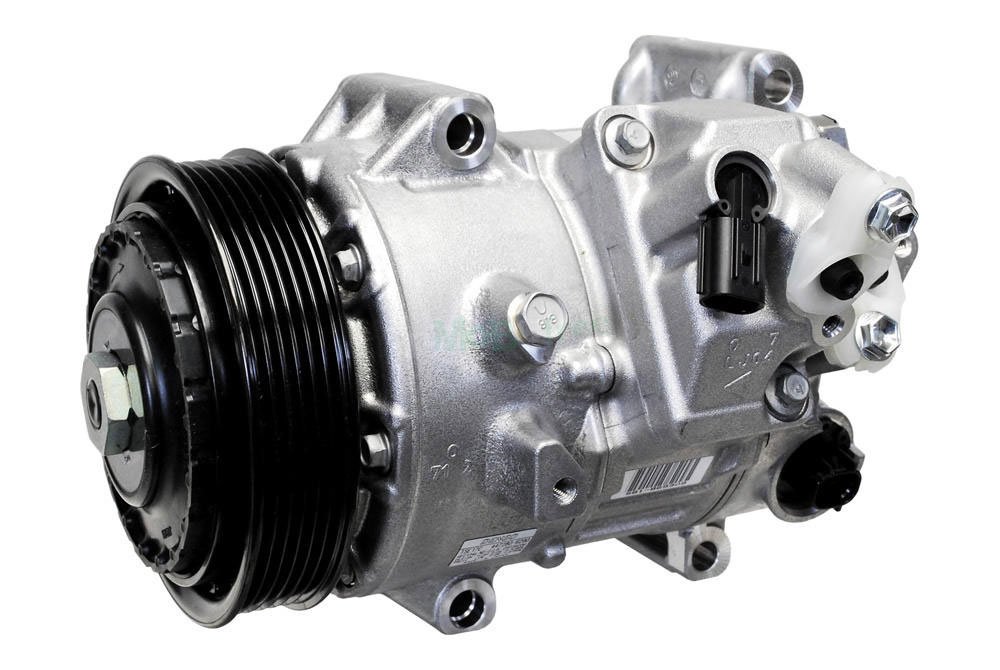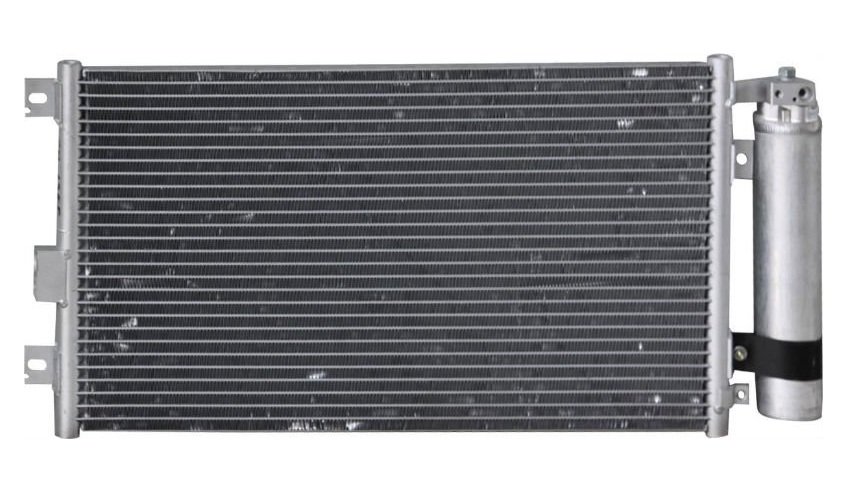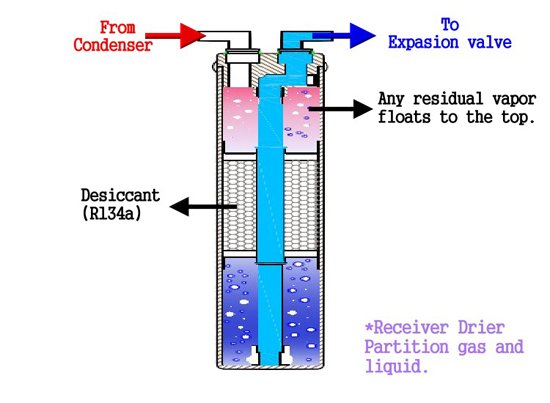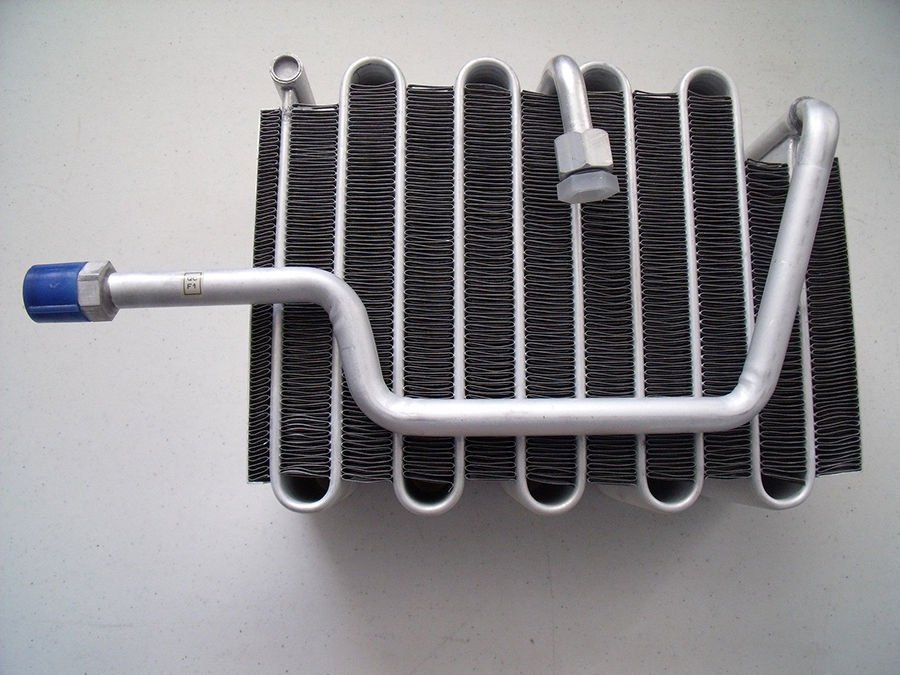Ever wondered how does Car Air Conditioner (AC) work
Hello, Guys today I will explain the car’s air conditioner and what are the components used in the car AC system.
When we think about an air conditioner first thing in our mind is cool air and comfort. In summers AC is a must in every car cause the climate in India gets really high in most cities.
How AC Works
Air conditioning is a simple process, it cools the air without any moisture. It converts the low-pressure gas into a liquid and cools our cabin.
The components used in the Car AC system are
- Compressor
- Condenser
- The receiver, drier, or accumulator
- Expansion valve or orifice tube
- Evaporator
High-Pressure Side
Compressor:

This is the heart of your AC system. Its main job is to transform the low-temperature low-pressure gas into a high-temperature high-pressure gas. The compressor is a pump driven by a belt attached to the engine’s crankshaft. When the R-134a refrigerant is drawn into the compressor, it is in a low-pressure gaseous form. The belt drives the pump, which puts the gas under pressure and forces it out to the condenser.
Condenser:

The condenser works exactly like the radiator (Read about car cooling system to understand what is radiator here) on your car, it is situated beside your radiator. It uses the same fan used by the radiator, but sometimes the condenser will have its own electric cooling fan. Its purpose is also to radiate heat out of the system. The refrigerant enters the condenser as a pressurized gas from the compressor. This process of pressurizing gas and moving to the condenser creates heat. So the condenser has twisting tubes through which the air flows and cools the gas until it is converted into liquid. It is just like the steam cooling down and condensing back into the water.
Receiver-Dryer:

The receiver dryer contains desiccant (Small granules that attract water), it works like a dryer and absorbs any water in the system. It also has a filter that filters out any debris. You’ve seen packets of desiccant in shoeboxes, where they do the same thing: attract water from the air to keep new shoes fresh and ready for your feet. If the water is allowed to remain and possibly form ice crystals, it can damage the air conditioning system.
Low-Pressure Side
Expansion Valve or Orifice Tube:

Some vehicles use expansion valve and some vehicles use orifice tube, both are for the same purpose. It is the system that changes from the high-pressure side to the low-pressure side.
The high-pressure liquid refrigerant flows from the receiver dryer through the expansion valve, where it is allowed to expand. This expansion reduces the pressure on the refrigerant, so it can move into the evaporator. The valve senses pressure and regulates the flow of refrigerant, which allows the system to operate steadily, but the moving parts of the valve can wear out and sometimes require replacement.
Evaporator:

This is where the magic happens. While all the other parts of ac are located in the engine compartment, it is located inside the dashboard behind your AC vents. It is similar to the radiator in looks with its coil of tubes and fins but works exactly opposite to the condenser. The evaporator also absorbs the humidity out of the air, so you feel cool air inside the cabin.
Refrigerant enters the evaporator coil as a cold low-pressure liquid, the temperature is ideally 0° celsius, which why u don’t want water in this system. The refrigerant does not freeze. The heat in the cabin of the car is enough to make the R-134a in the evaporator to boil and become a gas again, just like water turning back to steam.
In its gaseous form, refrigerant can absorb a lot of heat. This gas moves out of the passenger cabin and out of the evaporator taking the heat with it. A fan blowing over the outside of the evaporator coil blows cool air into the passenger compartment. From the evaporator, the gas now enters the compressor where it is pressurized and the process starts all over again. You may see water dripping from below your car, it is the water from the evaporator.
If your car uses the orifice tube, there will be an accumulator between the evaporator and the compressor. An orifice tube sometimes lets too much of the refrigerant into the evaporator, and all of it does not boil. Since the compressor cannot compress the liquid, the accumulator traps the excess liquid and passes only gas to the compressor.
Watch the video below to see how to recharge your AC refrigerant. Though if you are not sure how to do this get it done by a car specialist.
Courtesy: Engineering Explained






Pingback: Top 5 DIY Car Maintenance Tips – ReviewStories
Pingback: Why A Certified BMW Service Center Is Better Than Any Other Options?
Pingback: Installing Efficient Air Conditioning for Vehicles - ReviewStories
Pingback: Car Ac System - 6 Reason for car AC failure - thereviewstories
Nice
Thanks